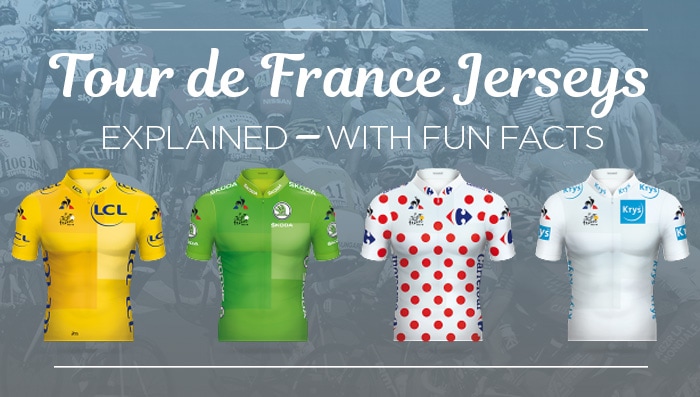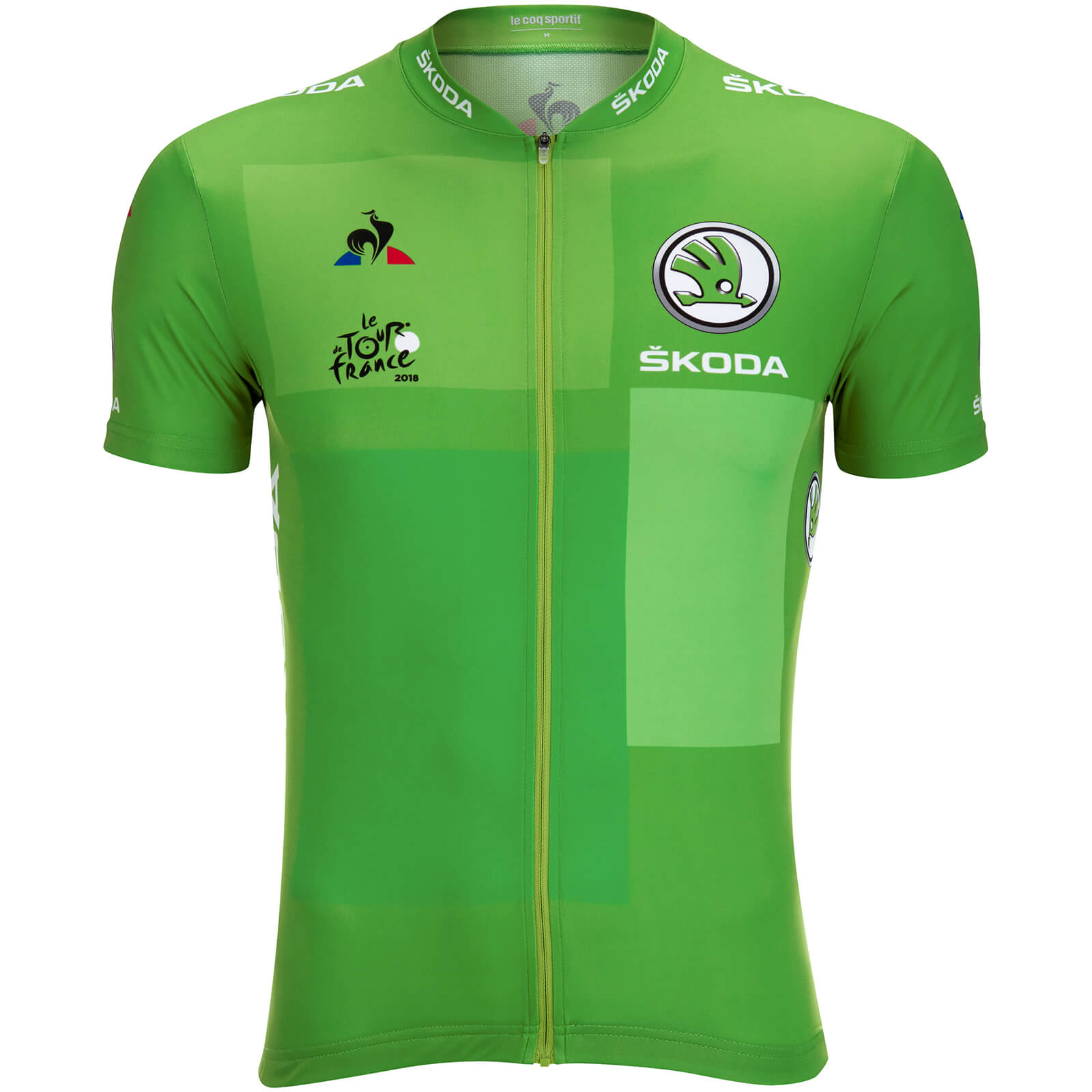The Rich History and Symbolism Behind Tour de France Jerseys
The Tour de France, an iconic cycling race, has a long-standing tradition that dates back to 1903. Over the years, jersey colors have become an essential aspect of the event, representing different classifications and their leaders. The evolution of these jersey colors has a fascinating history that intertwines with the development of the race itself.
Originally, riders in the Tour de France wore dark woolen jerseys, which proved impractical due to their inability to effectively dissipate heat. In 1913, the race organizers, Amaury Sport Organisation (ASO), introduced the yellow jersey (maillot jaune) to distinguish the overall race leader. The color yellow was chosen as it was the same hue as the pages of the newspaper L’Auto, which sponsored the race at the time.
Since then, the yellow jersey has become synonymous with the Tour de France, symbolizing overall race dominance and prestige. The jersey’s color has also inspired various nicknames, such as the “Maillot Soleil” (French for sun) and the “Golden Fleece.”
Over time, additional jersey colors were introduced to represent various classifications within the race. The green jersey (maillot vert) was introduced in 1953, symbolizing the points classification leader. The polka dot jersey (maillot à pois rouges) was added in 1975, representing the king of the mountains classification leader. Lastly, the white jersey (maillot blanc) was introduced in 1975, signifying the best-placed rider under the age of 26.
These jersey colors have become an integral part of the Tour de France, representing the diverse aspects of the race and the unique skills required to excel in each classification. Understanding the significance of these jersey colors offers a deeper appreciation for the rich history and symbolism behind the Tour de France.
Understanding the Four Iconic Tour de France Jersey Colors
The Tour de France features four primary jersey colors, each representing a different classification and skill set. These iconic jerseys – yellow, green, polka dot, and white – have become synonymous with the race and its rich history.
The most prestigious of these jerseys is the yellow jersey (maillot jaune), which symbolizes the overall race leader. Awarded to the rider with the lowest aggregate time across all stages, the yellow jersey represents overall dominance and prestige.
The green jersey (maillot vert) is given to the rider with the most points accumulated through intermediate sprints and stage finishes. This jersey highlights the importance of sprinters in the race, as they compete for points during flat and hilly stages.
The polka dot jersey (maillot à pois rouges) is awarded to the rider who earns the most points for reaching mountain summits first. Known as the “King of the Mountains” jersey, this classification emphasizes the importance of climbing skills in the Tour de France.
Lastly, the white jersey (maillot blanc) is presented to the best-placed rider under the age of 26. This jersey showcases the importance of emerging talents in the race, highlighting the potential future stars of the cycling world.
These four jersey colors represent the diverse aspects of the Tour de France and the unique skills required to excel in each classification. By understanding the significance of these jersey colors, fans and enthusiasts alike can gain a deeper appreciation for the race and its participants.
Yellow Jersey (Maillot Jaune): The General Classification Leader
The yellow jersey (maillot jaune) is the most prestigious and iconic jersey in the Tour de France. Introduced in 1913, the yellow jersey represents the overall race leader, awarded to the rider with the lowest aggregate time across all stages.
The idea for the yellow jersey came from the newspaper L’Auto, which sponsored the race at the time. The color yellow was chosen as it was the same hue as the paper’s pages, ensuring maximum visibility and recognition for the race leader.
Wearing the yellow jersey comes with immense pressure and prestige, as the leader must defend their position against fierce competition. The yellow jersey has become synonymous with overall race dominance and prestige, symbolizing the ultimate goal for many Tour de France participants.
Throughout the race’s history, the yellow jersey has been worn by some of the sport’s greatest champions, including Jacques Anquetil, Eddy Merckx, Bernard Hinault, and Miguel Indurain. More recently, riders like Chris Froome, Geraint Thomas, and Tadej Pogačar have added their names to the illustrious list of yellow jersey winners.
The yellow jersey remains a powerful symbol of the Tour de France, representing overall race leadership and prestige. Understanding its significance offers a deeper appreciation for the rich history and tradition of the world’s most famous cycling race.
https://www.youtube.com/watch?v=gszx-z-jeck
Green Jersey (Maillot Vert): The Points Classification Leader
The green jersey (maillot vert) is a coveted prize in the Tour de France, awarded to the rider with the most points accumulated through intermediate sprints and stage finishes. Introduced in 1953, the green jersey emphasizes the importance of sprinters in the race, showcasing their speed and consistency.
Points are distributed at intermediate sprints and stage finishes, with more points available at the latter. This system encourages aggressive racing, as riders battle for position and attempt to outmaneuver their rivals.
Throughout the race’s history, some of the sport’s most prolific sprinters have donned the green jersey, including Eddy Merckx, Sean Kelly, and Mark Cavendish. These riders have demonstrated exceptional speed, tactical awareness, and resilience, often overcoming challenging terrain and fierce competition to secure their place atop the points classification.
The green jersey remains a powerful symbol of the Tour de France, representing the importance of sprinting and tactical racing. By understanding its significance, fans and enthusiasts alike can gain a deeper appreciation for the diverse skills and strategies required to excel in the world’s most famous cycling race.
Polka Dot Jersey (Maillot à Pois Rouges): The King of the Mountains
The polka dot jersey (maillot à pois rouges) is a distinctive and revered prize in the Tour de France, awarded to the rider who earns the most points for reaching mountain summits first. Introduced in 1975, the polka dot jersey highlights the significance of climbing skills in the race, showcasing the strength, endurance, and determination of its wearer.
Points are distributed at mountain summits throughout the race, with higher-valued points available at more challenging peaks. This system encourages aggressive climbing, as riders battle for position and attempt to outmaneuver their rivals on the steepest slopes.
Throughout the race’s history, some of the sport’s most accomplished climbers have donned the polka dot jersey, including Lucien Van Impe, Federico Bahamontes, and Richard Virenque. These riders have demonstrated exceptional strength, resilience, and tactical awareness, often overcoming seemingly insurmountable odds to secure their place atop the King of the Mountains classification.
The polka dot jersey remains a powerful symbol of the Tour de France, representing the importance of climbing and perseverance. By understanding its significance, fans and enthusiasts alike can gain a deeper appreciation for the diverse skills and strategies required to excel in the world’s most famous cycling race.
White Jersey (Maillot Blanc): The Young Rider Classification Leader
The white jersey (maillot blanc) is a symbol of youth and potential in the Tour de France, presented to the best-placed rider under the age of 26. Introduced in 1975, the white jersey showcases the importance of emerging talents in the race, highlighting the sport’s next generation of champions.
The white jersey is awarded based on the general classification, with the rider under 26 holding the highest position earning the right to wear the jersey. This system encourages young riders to challenge themselves against the world’s best, pushing the boundaries of their abilities and showcasing their potential.
Throughout the race’s history, some of the sport’s most promising young talents have donned the white jersey, including Greg LeMond, Marco Pantani, and Jan Ullrich. These riders have gone on to achieve great success in their careers, demonstrating the value of nurturing and supporting young cycling talent.
The white jersey remains a powerful symbol of the Tour de France, representing the importance of youth, potential, and the continued evolution of the sport. By understanding its significance, fans and enthusiasts alike can gain a deeper appreciation for the diverse skills and strategies required to excel in the world’s most famous cycling race.
https://www.youtube.com/watch?v=Ody5-_AIRHw
Additional Jerseys and Special Classifications
Beyond the four iconic Tour de France jersey colors, there are other jerseys and classifications that contribute to the race’s rich tapestry. These special distinctions highlight various aspects of the riders’ skills and performances, offering a comprehensive overview of the Tour de France jersey system.
Combativity Award (Prix de la Combativité)
The combativity award is given daily to the rider who displays the most aggressive and tenacious riding style. At the end of the Tour, an overall combativity award is presented to the rider who has shown the most determination and fighting spirit throughout the race.
Team Classification (Classement par Équipe)
The team classification is determined by adding the times of the best three riders from each team in each stage. The team with the lowest aggregate time at the end of the race is awarded the team classification.
Other Classifications and Awards
Several other classifications and awards exist within the Tour de France, including the lanterne rouge (awarded to the rider who finishes last in the general classification), the combativity award for each stage, and various stage and sprint classifications.
These additional jerseys and classifications add depth and complexity to the Tour de France, showcasing the diverse skills and strategies required to excel in the world’s most famous cycling race. By understanding their significance, fans and enthusiasts alike can gain a more comprehensive appreciation for the rich history and symbolism behind Tour de France jersey colors.
How to Collect Tour de France Jerseys: A Guide for Cycling Enthusiasts
Collecting Tour de France jerseys is a popular pursuit among cycling enthusiasts, offering a tangible connection to the rich history and symbolism behind the race. Here are some practical tips on how to acquire authentic Tour de France jerseys and participate in the vibrant cycling community.
Purchasing Authentic Merchandise
To ensure the authenticity and quality of your Tour de France jersey collection, consider purchasing from reputable sources. Official team stores, licensed retailers, and authorized online marketplaces often offer a wide selection of jerseys, allowing you to choose from current and past editions.
Attending Events and Races
Attending Tour de France events and races provides an excellent opportunity to acquire jerseys directly from teams and riders. Many teams offer merchandise for sale at the race village, while autograph sessions and meet-and-greets allow you to interact with your favorite cyclists and obtain signed jerseys.
Participating in Cycling Communities
Joining cycling communities, both online and offline, can help you connect with other collectors and enthusiasts. Participating in forums, social media groups, and local cycling clubs allows you to share knowledge, trade jerseys, and learn about upcoming events and opportunities.
Preserving Your Collection
To maintain the condition and value of your Tour de France jersey collection, follow best practices for storage and display. Hang jerseys on padded hangers, avoid exposure to direct sunlight, and use archival-quality storage materials to protect them from dust, moisture, and damage.
By following these practical tips, you can build a meaningful and impressive Tour de France jersey collection, showcasing your passion for the sport and its iconic jersey colors.







